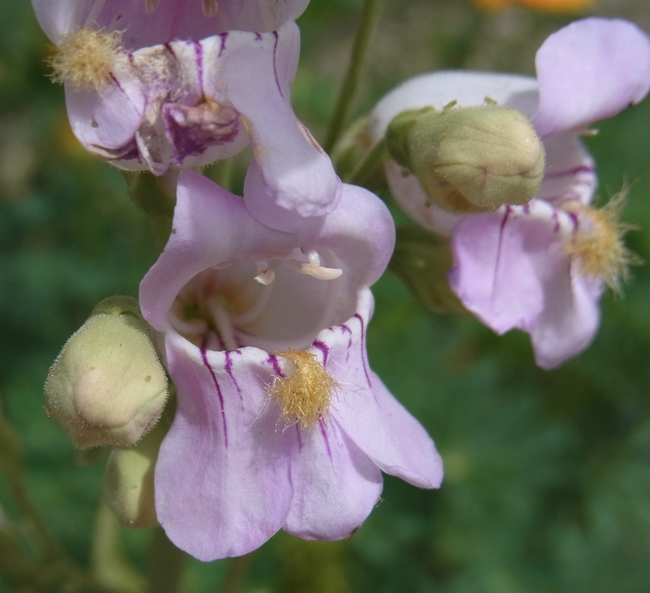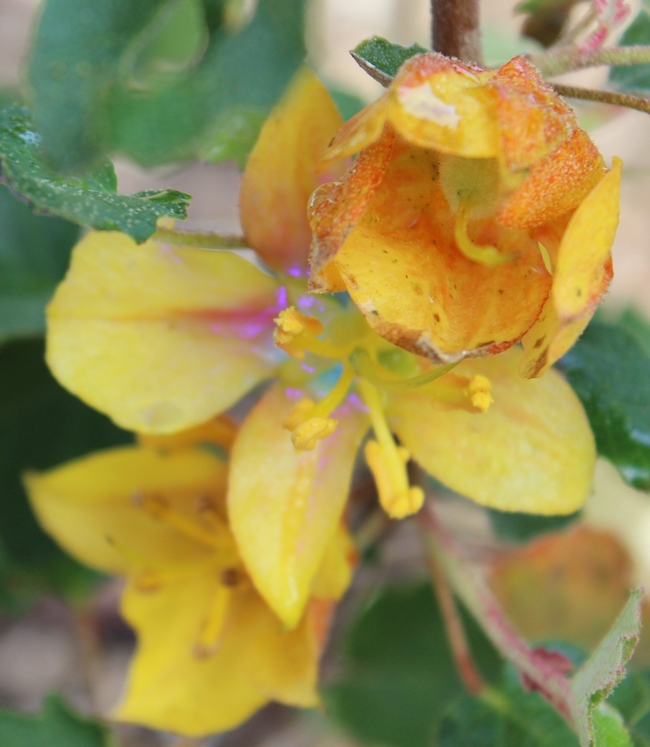Everyone can appreciate the beauty of flowers, but that's not to say flowers look nice just for us! We often get asked by Haven visitors how bees find their flower hosts. One way is through unique flower colors and shapes. Once bees are near a plant, flowers with intricate patterns can entice them even further through patterns on the petals that direct bees straight towards nectar rewards. Like runway lights at the airport, these intricate nectar guides can help orient pollinators during their flower visits.
Nectar guides are doubly useful for bees, as they use guides at individual flowers to find nectar faster and as search images to target similar flowers. Since plants of the same species tend to be flowering at the same time, loyal bees can be more efficient than bees that hop from one species to another. It's a win-win situation since loyal bees can collect nectar with less effort and the flowers get a greater chance of receiving pollen from their own species (Functional Ecology 2011, 24, 1293-1301).
So what about simple monotone flowers? Well, the thing about nectar guides is that we humans can't always see what the bees do! We can see all of the colors from red to violet, but bees see a shifted spectrum from yellow through ultra-violet (UV). So to bees, even seemingly plain flowers may have bold nectar guide patterns. With UV sensors, even humans can get a glimpse of what nectar guides look like to bees. (Plant Species Biology 2013, 28, 177-184). The web site Flowers in Ultra-Violet has many images comparing flowers in daylight and UV light in which the guides are visible.
Other than bees, hummingbirds, hawkmoths, and syrphid flies have been found to respond to nectar guides. Some flowers even have overlapping visible nectar guides and UV nectar guides, possibly to attract birds and bees simultaneously. (Functional Ecology 2011, 24, 1293-1301).
As you walk through the Haven, look at our flowers for these intricate patterns. Here are two of the species in our garden with visible nectar guides:


